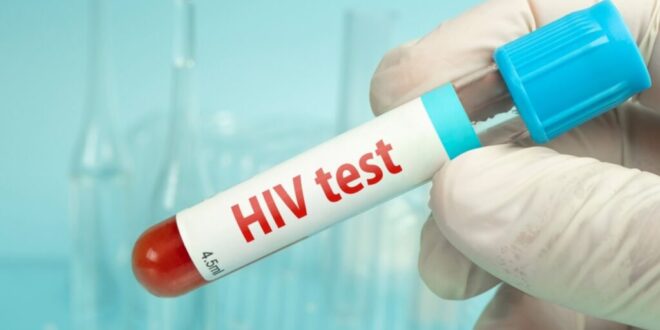HIV blood sample. Credit: Melnikov Dmitriy, Shutterstock
New LNP X nanoparticle delivers mRNA to ‘invisible’ HIV cells without toxicity.
Researchers in Melbourne have made a significant step towards an HIV cure by discovering a way to reveal the virus that is hidden within human white blood cell. It is this that has blocked real progress in the fight against HIV (Human Immunodeficiency Virus). HIV can cause AIDS (Acquired immunodeficiency syndrome) if it is not treated.
The study published in Nature Communications In May 2025, the article describes how scientists at the Peter Doherty Institute for Infection and Immunity created a new lipid-nanoparticle called LNP X that is capable of delivering HIV mRNA to resting CD4+T cells. The Tat protein encoded by the mRNA activates viral transcription.
This is, to our knowledge, the first in vitro demonstration of successful and non-toxic transfection of primary cells of T cells without T cell stimulation, which was formerly thought as a requirement for efficient LNP-transfection, according to the study.
LNP-X: How it can help detect HIV in the body
HIV is hidden in a “latent reservoir” within CD4+T cells even among people who are receiving antiretroviral therapies (ART). The LNP X particle encapsulates mRNA for the Tat Protein, which jumpstarts HIV transcript without triggering unwanted cells activation.
A study conducted after only one dose of Tat LNP X found:
- A 112-fold rise in HIV RNA that is multi-spliced (TatRev transcripts).
- HIV transcription is higher than that caused by standard mitogens PMA/PHA
- A 17.2-fold increase of HIV virion in culture medium.
This was achieved without harming the cells or triggering immune alarms.
Researchers “overwhelmed by HIV breakthrough
Dr Paula Cevaal is one of the authors. The Guardian When they first saw the results in the laboratory, the initial impression was that the results were “too good for true”.
The new technique outperformed previous attempts using older nanoparticles that failed to deliver mRNA directly to the immune cells.
HIV cure is not yet available, but there’s still hope
Scientists were quick to temper their expectations, despite the excitement.
“In the field of biomedicine, many things eventually don’t make it into the clinic – that is the unfortunate truth,” said Dr Cevaal. “But specifically in the field of HIV treatment, we’ve never seen anything as good as we are now.”
This means the virus wasn’t eliminated but only exposed. Next steps will require the combination of this reactivation and therapies that kill infected cell, which is still being developed.
It is important to note that the word “you” means “you”. Nature Communications The paper concluded that LNP-X could be used as a tool to deliver CRISPR or mRNA to “hard-to transfect” cell types, such as cancer.
All health and beauty articles are available.
 Costa News Spain Breaking News | English News in Spain.
Costa News Spain Breaking News | English News in Spain.





